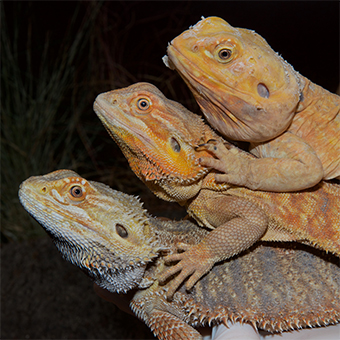Hairs, feathers and scales have a lot in common !

The potential evolutionary link between hairs in mammals, feathers in birds and scales in reptiles has been debated for decades. Today, researchers of the University of Geneva (UNIGE) and the SIB Swiss Institute of Bioinformatics, Switzerland, demonstrate that all these skin appendages are homologous: they share a common ancestry. On the basis of new analyses of embryonic development, the Swiss biologists evidenced molecular and micro-anatomical signatures that are identical between hairs, feathers and scales at their early developmental stages. These new observations, published today in Science Advances, indicate that the three structures evolved from their common reptilian ancestor.
Mammalian hairs and avian feathers develop from a similar primordial structure called a ‘placode’: a local thickening of the epidermis with columnar cells that reduce their rate of proliferation and express very specific genes. This observation has puzzled evolutionary and developmental biologists for many years because birds and mammals are not sister groups: they evolved from different reptilian lineages. According to previous studies, reptiles’ scales however do not develop from an anatomical placode. This would imply that birds and mammals have independently ‘invented’ placodes during their evolution.
The single evolutionary origin of placodes revealed
In 2015, a team from Yale University (USA) published an article showing that scales, hairs and feathers share molecular signatures during their development. These results fueled an old debate between two schools. One defends that these molecular signatures suggest a common evolutionary origin of skin appendages, whereas the other proposes that the same genes are re-used for developing different skin appendages.
Today, Nicolas Di-Poï and Michel C. Milinkovitch at the Department of Genetics and Evolution of the UNIGE Faculty of Science and at the SIB put this long controversy to rest by demonstrating that scales in reptiles develop from a placode with all the anatomical and molecular signatures of avian and mammalian placodes. The two scientists finely observed and analysed the skin morphological and molecular characteristics during embryonic development in crocodiles, snakes and lizards. ‘Our study not only provides new molecular data that complement the work of the American team but also reveals key microanatomical facts, explains Michel Milinkovitch. Indeed, we have identified in reptiles new molecular signatures that are identical to those observed during the development of hairs and feathers, as well as the presence of the same anatomical placode as in mammals and birds. This indicates that the three types of skin appendages are homologous: the reptilian scales, the avian feathers and the mammalian hairs, despite their very different final shapes, evolved from the scales of their reptilian common ancestor.’
A key gene for skin appendage development
During their new study, the researchers from UNIGE and SIB also investigated the bearded dragon, a species of lizard that comes in three variants. The first is the normal wild-type form. The second has scales of reduced size because it bears one copy of a natural genetic mutation. The third has two copies of the mutation … and lacks all scales. By comparing the genome of these three variants, Di-Poï and Milinkovitch have discovered the gene affected by this mutation. ‘We identified that the peculiar look of these naked lizards is due to the disruption of the ectodysplasin-A (EDA), a gene whose mutations in humans and mice are known to generate substantial abnormalities in the development of teeth, glands, nails and hairs’, says Michel Milinkovitch. The Swiss researchers have demonstrated that, when EDA is malfunctioning in lizards, they fail to develop a proper scale placode, exactly as mammals or birds affected with similar mutations in that same gene cannot develop proper hairs or feathers placodes. These data all coherently indicate the common ancestry between scales, feathers and hairs.
The next challenge for the Swiss team, and many other researchers around the world, is to decipher the fine mechanisms explaining the diversity of forms of skin appendages. How has the ancestral scaly skin given rise to the very different morphologies of scales, feathers and hairs, as well as the astonishing variety of forms that these appendages can take? These future studies will hopefully fine-tune our understanding of the physical and molecular mechanisms generating the complexity and the diversity of life during evolution.
Contact: Michel Milinkovitch +41 22 379 33 38
20 Jun 2016